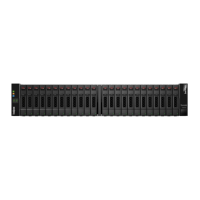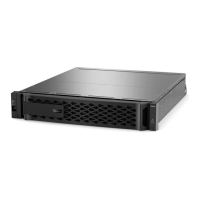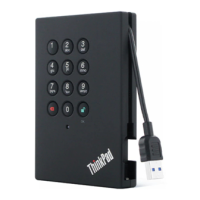mirrored pairs, which removes mirror relationships on the local storage array and on the
remote storage array. In addition, follow the instructions in the online help to deactivate
Synchronous Mirroring.
If you do not deactivate Synchronous Mirroring relationships before
converting to iSCSI, your system will lose data access and data loss
might occur.
Converting from iSCSI to FC (not applicable to controllers without two base-board ports
on the rear)
•
Asynchronous Mirroring requires both the local storage array and the remote storage array to
use the same protocol. If you are currently using Asynchronous Mirroring with the baseboard
ports, you must deactivate Asynchronous Mirroring before changing the protocol.
•
Refer to the online help for ThinkSystem System Manager to delete all mirror consistency
groups and remove all mirrored pairs from the local and remote storage arrays. In addition,
follow the instructions in the online help to deactivate Asynchronous Mirroring.
7.2. Change DE6000H host protocol
For a DE6000H storage array, you can convert baseboard host ports as follows:
•
Fibre Channel (FC) to iSCSI (not applicable to controllers without two base-board ports on the
rear)
•
iSCSI to FC (not applicable to controllers without two base-board ports on the rear)
•
NVMe to RoCE/ NVMe to FC
7.2.1. Step 1: Determine whether you have dual-protocol SFPs
Use ThinkSystem System Manager to determine what type of SFP transceivers you have. Because
these SFPs can be used with both FC and iSCSI protocols, they are referred to as dual-protocol or
unified SFPs.
If your current SFPs support data rates of 16 Gbps and 10 Gbps, you can continue to use them
after converting the host port protocol.
Steps
1.
From ThinkSystem System Manager, select Support.
2.
Select the Support Center tile.
3.
On the Support Resources tab, locate and select the Storage Array Profile link.
4.
Type SFP in the text box, and click Find.
5.
For each SFP listed in the Storage Array Profile, locate the entry for Supported data rate(s).
130

